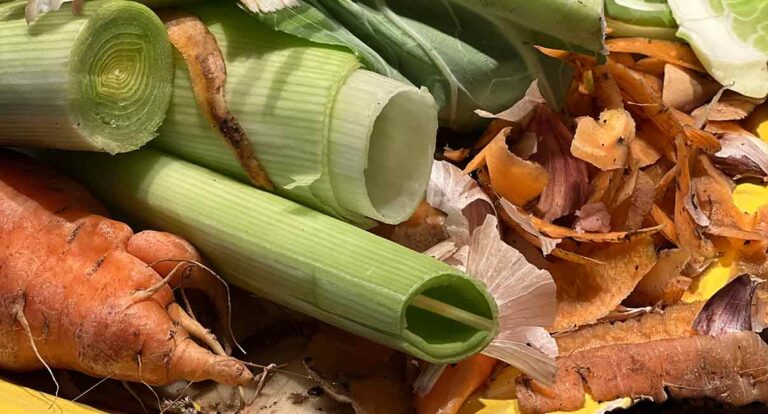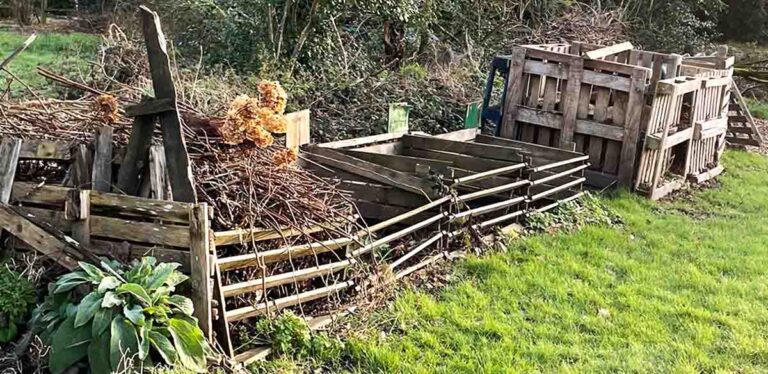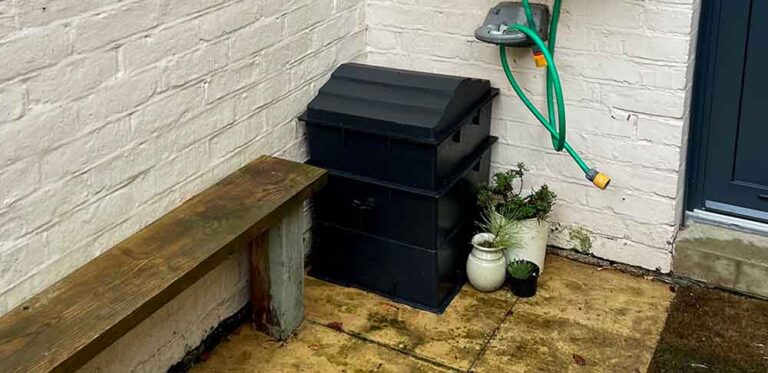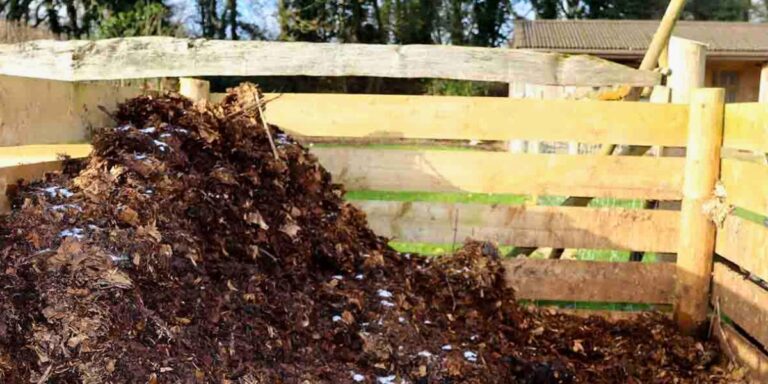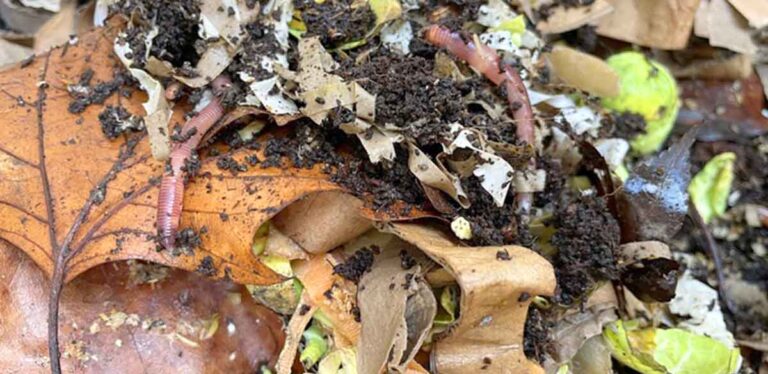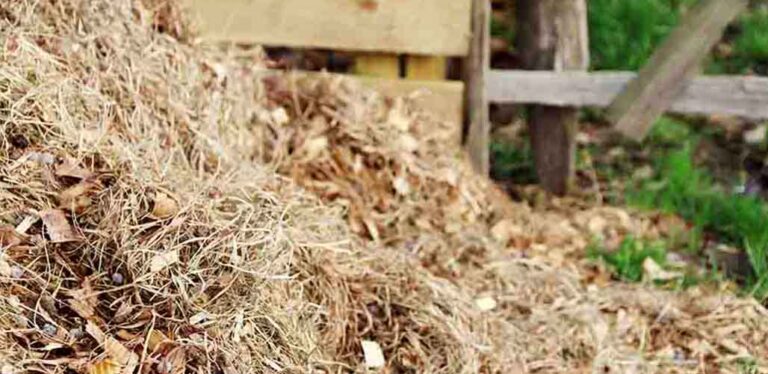Composting During The Coldest Months Of The Year
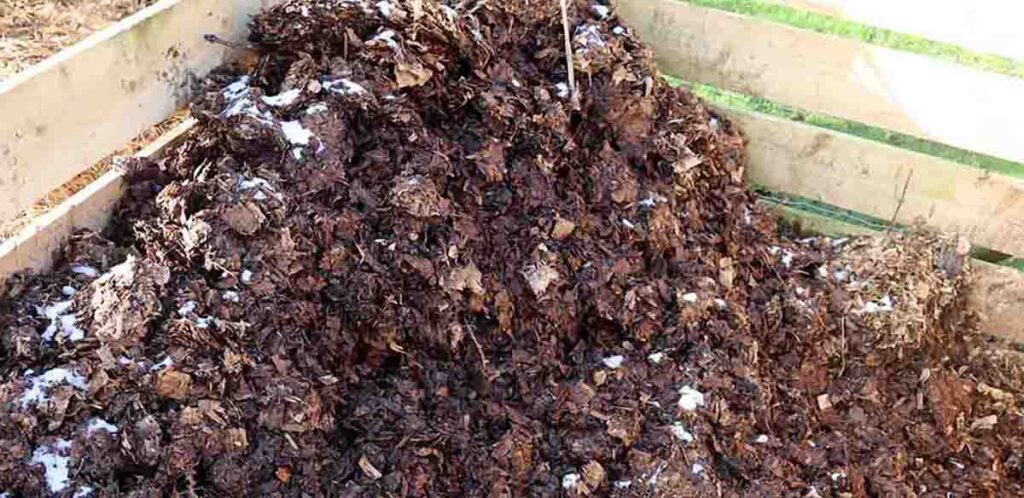
Composting during the coldest months of the year is a much slower process than composting in summer. It may even grind to halt altogether, if winter conditions in your region are cold enough. Let’s take a look at the merits of trying to persevere with composting in winter. And what it will take to keep your pile active in the coldest weather.
- What happens inside your composter in cold weather?
- Barriers to composting in winter
- Tips for composting during the coldest months of the year
- Alternative forms of composting in winter
What happens inside your composter in cold weather?
Managing your compost pile in cold weather raises a few questions. Your compost pile is a living, thriving community of microbes which reproduce and multiply until they engulf the contents of your heap, breaking it down into rich humus as they go. But what happens to those microbes when the temperatures start to fall outside?
Most bacteria enter a dormant state when the temperature drops below about 46 – 60°F (8-15°C). Which means they stop digesting organic material, and stop reproducing and spreading through your pile too. But a cold snap doesn’t kill them – most bacteria are immune to even many months of very low sub-zero temperatures. And as soon as spring rolls around and the mercury starts to rise again, the bacteria in your compost pile will wake up, and resume the composting process right where they left off.
So the short answer is that if inside of your compost pile is consistently colder than 60°F, then not a lot will happen in there at all. And keeping the process going relies on keeping the core of your heap insulated from the weather outside it.
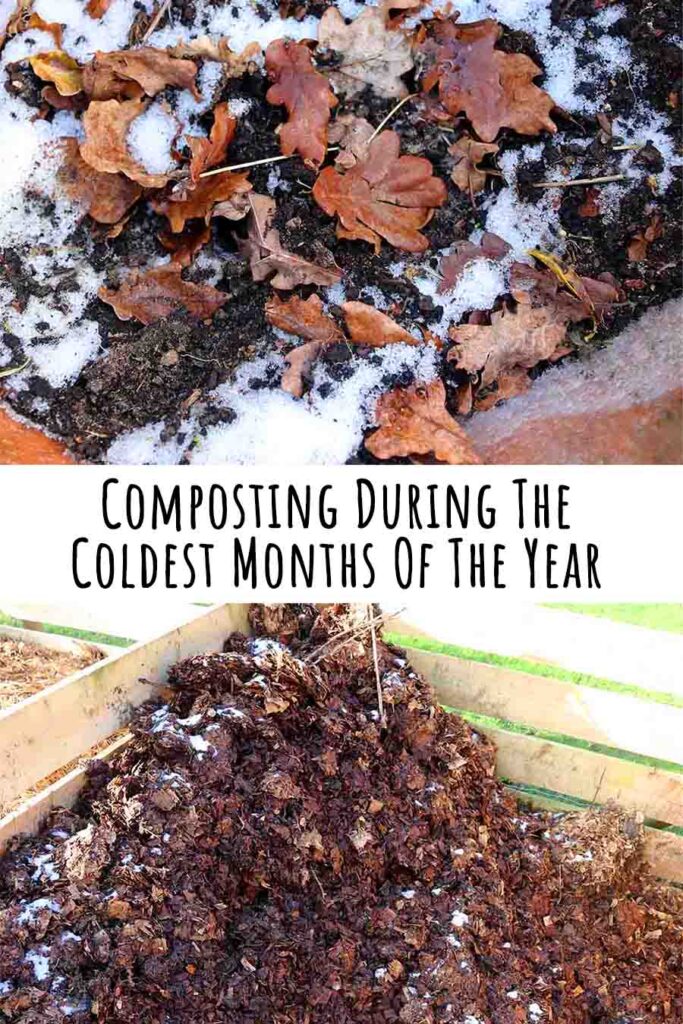
Barriers to composting in winter
Let’s face it, sluggish bacteria aren’t the only problem with composting in winter. You’re also going to be up against:
- Lack of motivation. It’s ok to be a fair weather gardener! I know I am.
- Fewer compostable materials available. Your kitchen will keep supplying material all year round. But grass clippings, green plant material, and woody prunings are going to be in short supply.
- Access. It’s not a good idea to walk across frozen or waterlogged lawns more than necessary. And of course adding material to a pile that’s buried under snow is hopelessly impractical.
- Adverse weather. Heavy rain can make compost piles too wet, and flood the air pockets inside it. This causes anaerobic bacteria to flourish and release ammonia gas – yuck!
It’s ok to let your compost go dormant
If braving the cold and wet to keep your compost pile active is not your idea of a fun challenge, that’s fine! At the community garden where I have a plot, composting is joint effort. Lots of people taking turns to layer up brown and green materials from the collecting bays, and to dig out and turn over the active compost pile. But from late fall onwards everyone gets busy with thanksgiving, Christmas, traveling to see family. No to mention generally hiding indoors from the unfavorable weather. So a collective decision has been made to put composting on the back burner in winter. Nothing is lost – remember the bacteria in the dormant pile hasn’t died! And green and brown materials can still be donated throughout winter in separate bays, ready to be layered when the weather starts to warm up again in spring.
6 tips for composting during the coldest months of the year
If you want to try and keep your compost active, that’s a noble aim. And there’s definitely no harm in giving it a go – even if you give up in mid-January, you’ll still be able to bring your pile back to life in spring, with nothing lost
1. Go big
An open compost pile with a volume of 220 gallons can stay hot in the center, even when the air temperature outside is freezing, because it’s big enough for the edges to insulate the interior. To achieve that volume, your pile needs to be at least 4 feet but ideally 5 feet wide, deep, and tall. And you need to be able to fill it up. So obviously this means you need access to a lot of green and brown material. (Which alone is enough to stop a lot of us from being able to keep up composting in winter).
2. Prepare in advance
Your kitchen will produce a reliable supply of nitrogen rich ‘green’ material all year round. But in winter you’ll collect fewer carbon rich ‘brown’ materials from your garden. Be ready for this by collecting dead leaves in fall, and shredding scrap paper, so you have a reserve of brown materials to layer with your kitchen scraps through winter. For faster composting, run over your dead leaves with a lawn mower to break them down first.
3. Create air pockets
Waterlogging is the enemy of winter composting. Efficient composting relies on oxygen-loving aerobic bacteria. But if rain water fills up the air pockets in your pile, the aerobic bacteria will drown and be replaced by anaerobic bacteria, resulting in a smelly heap. Build your pile on a bed of sticks or an old pallet to facilitate drainage, and add small twigs between the layers of new material. This promotes airflow, which also reduces the need to turn your heap. Remember that, because we’ll talk about it more in a moment!
4. Drive up the heat
Use nitrogen rich materials like coffee grounds and chicken manure to give the good bacteria in your pile a boost. Active bacterial populations generate heat, which warm up their surroundings and make more of your pile hospitable to new bacteria. It’s a classic positive feedback loop!
5. Don’t overdo it
Assuming you manage to get your pile fired up inside, you should notice it’s volume gradually start to decline, as usual. Add new material to your pile infrequently, to allow for the decomposition process proceeding more slowly than usual. Burying the material under the surface of the pile will mean the fresh reserves of carbon and nitrogen reach the active bacteria in the warm interior, instead of just sitting on the cold surface and not changing. It will also prevent your pile becoming a magnet to hungry pests. Try to incorporate the new material on a mild day, so you don’t let cold air into the center of your pile.
6. Wrap it up warm
A big enough compost bay should be self insulating, but you can give it extra protection and protect it from getting water logged by covering it with straw, bags of dry leaves, or even old blankets. Make your insulation easy to remove, so you can keep tucking new material underneath. Small composting containers that don’t have enough volume to stay warm inside overwinter can also be kept active for more of the year by wrapping them in blankets, towels, carboard or bubble wrap.
Should you turn your compost in winter?
Turning your compost in cold weather is a bit of a double edged sword. On the one hand it aerates the good microbes, which helps them start to multiply again, which in turn raises the temperature in the pile and speeds up the decomposition process. But on the other hand it exposes the warm parts of your compost to the cold air outside, lowering the temperature. Incorporating lots of crumpled paper and cardboard, or small twigs, is a good way to promote gentle airflow through your compost, without having to turn it. If you can’t resist digging it out, or you have to dig it out to add more brown material to a waterlogged pile, try and do it on a mild day.
Alternative forms of composting in winter
Traditional compost piles aren’t the only types of composting affected by cold weather conditions…
Worm farms
Worms farms usually go dormant in winter. When worms eat your kitchen waste, it’s actually bacteria on the surface of your scraps that they’re gaining nutrition from. And in winter, since it’s too cold for bacteria to reproduce over the surface of new materials, the worms hibernate too. This conserves their energy until there’s a ready source of nourishment available again.
Unlike bacteria though, composting worms will freeze to death pretty easily. Protect them from conditions below 30°F (0°C) by moving your worm farm into a greenhouse, shed, garage or basement. Or even your kitchen – a healthy worm farm shouldn’t have any odor! For extra protection outdoors, you can fill any empty space inside the top of the worm farm with dry straw or hay, and wrap the outside in bubble wrap or old blankets. Insulating your worm farm early on will prolong how late into fall the the worms stay active. Take care not to overfeed them, and only add new material when the last meal is nearly gone. There’s no point burying your worms under an ever-deeper pile of uneaten scraps, and it could make them sick in spring.
Hot composting systems
Hot composting systems have a thick layer of insulating material in their walls, and they’re usually kept ‘fired up’ by the regular addition of active bacteria. So even though their capacity is relatively small, they should keep working well below the outside temperature that an open, uninsulated bin of the same size would go dormant at. Since they usually have a small footprint, if you have space you can even hedge your bets by moving them into a basement or garage.
Bokashi composting
Bokashi buckets also rely on the awesome abilities of bacteria. But since they tend to be kept indoors, they’re immune to the cold weather changes in winter. Which is fine, except that bokashi is only half of the composting process – your fermented waste still needs to finish breaking down in some kind of composter. You can add your bokashi waste to a cold compost pile and it will finish breaking down rapidly in spring, or bury it in a hot pile, where the ready-made population of bacteria should work wonders to help drive the temperature up.
Summary
Composting during the coldest months of the year is trickier, and usually a slower process, but not impossible. You can keep decomposition going by building big pile, so the interior is insulated from the weather outside. Or by relocating a small composting container into a warmer location, or wrapping it in insulating material. Even if your compost pile goes completely dormant – either by accident or design – it can easily be revived in spring by mixing in new material. Let us know whether you’re going to try and keep your compost heap going this winter using the comments box down below!

